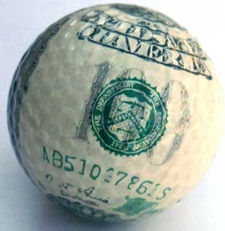
Written By: Maurice Ondoy Project Contributor at AngelouEconomics | What is the Economic Impact of Golf?
Golf is a game which is enjoyed all over the world by both players and fans alike.
It was in Scotland where the sport was invented and first played in the 15th century. The sport spread quickly to England and from there, it spread to the rest of the world. The Honorable Company of Edinburgh Golfers, which was the first Golf Club, was formed in Scotland in 1744. The first official rules and guidelines were published not much later. In the United States, it was in 1916 that the Professional Golfers’ Association of America, or PGA, was formed and headquartered in Palm Beach Gardens, Florida, ushering professional golf. The association is composed of 29,000 men and women golf professional members. 
Nowadays, golf is a global phenomenon and is a very popular sport with major golf tournaments from all-over the world that draw huge crowds both live and on television.
The impact of golf is not isolated to the sports industry. The prevalence of golf has elevated the global economy by providing lifetime recreational opportunity for millions of people, creating millions of jobs, and generating billions of dollars in total economic activity. Moreover, golf is a major U.S. industry which has been bolstering economic development opportunities and generating tax revenues for local communities.
The industry impacts 2 million jobs across America and approximately has shared $4 billion annual charitable impact.
Quick Figures on the Economic Impact of Golf Industry
A recent study prepared by TEConomy Partners, LLC, in agreement with GOLF 20/20 and supported by allied national golf organizations such as Golf Course Superintendents Association of America (GCSAA), Indo-American Golf Association (IAGA), Ladies Professional Golf Association (LPGA), National Golf Course Owners Association (NGCOA), PGA of America, PGA TOUR, and United States Golf Association reported the overall quantitative economic impacts of the golf industry in the United States. Below is the summary of economic figures of the industry:
- $191.90 Billion – Golf industry’s total economic impact in America, including direct, indirect and induced impacts
- $84.10 Billion – Total size of the golf economy nationally. There is an increase of 22% as compared to the data gathered in 2011$58.70 Billion – Total wage income from approximately two million U.S. jobs created
- $25.70 Billion – Total in golf tourism spending
- $7.20 Billion – Total new home construction in golf communities
- $38 – Median cost of a round
- 15,000 – Estimated number of U.S. golf facilities, with about 10,000 open to the public
- Approximately 75% of golf courses are public
- 8 out of 10 – According to the study, 8 out of 10, or 80% of golfers play at public access facilities
- 1 out of 75 – According to the U.S. Bureau of Labor Statistics, one out of the 75 jobs in the U.S. is impacted by the golf industry
About AngelouEconomics:
AngelouEconomics has worked with numerous professional and business associations in building dozens of unique economic impact studies among other types of projects including site selection projects as well as strategic economic development projects. Some projects have examined the effects of statewide policy measures, such as the Texas Bathroom Bill or ban on Sanctuary Cities. Other projects have measured the contribution of member networks in terms of jobs, wages, and total economic output. Like this study for Prospera, a nonprofit organization which specializes in providing bilingual assistance to Hispanic entrepreneurs in Florida. Economic impact studies are effective tools for quantifying and illustrating the value of individual professional and business associations. They are versatile, as they can illustrate the value or impact of a specific policy or quantify the economic contribution of your members to the local, regional, and nationwide economies.
Want to Learn More?
If you would like to learn more send us an email at info@angeloueconomics.com

[…] tax revenues while also sparking economic activity across many other sectors that may experience economic growth because of the rise in tourism and spending at golf courses. The flow-on effects of golfing are […]
[…] (Golf and its Economic Impact in the United States – AngelouEconomics) […]